Rambutan Profile
Written by lisa
Nov 09 2020
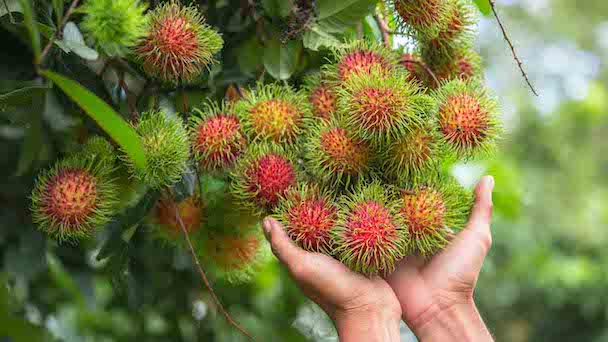
Rambutan is a large tropical fruit tree in the Sapindus family native to Southeast Asia. It is called rambutan in Malay, which means hairy things. Ripe rambutan fruits are not all red, but also yellow. The core size of some rambutans is similar to that of sesame. The taste of rambutan is similar to that of lychee. Rambutan is planted in a relatively small area in China, and only Baoting and Sanya on Hainan Island grow larger areas of rambutan in China.
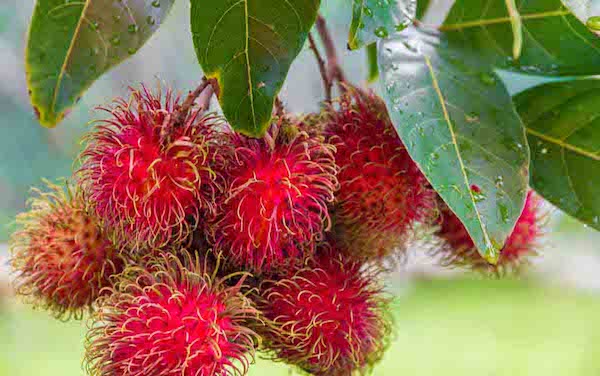
The inflorescence of rambutan is often branched, nearly as long as the leaves or longer, with rust-colored short hairs; pedicel short; the calyx is leathery, about 2 mm long, lobes ovate, tomentose; no petals; stamens about 3 Mm.
The fruit of rambutan is broadly oval, reddish-yellow, with thorns about 5 cm long, 4.5 cm wide, and thorns about 1 cm long. Flowering in early summer, fruiting in early autumn.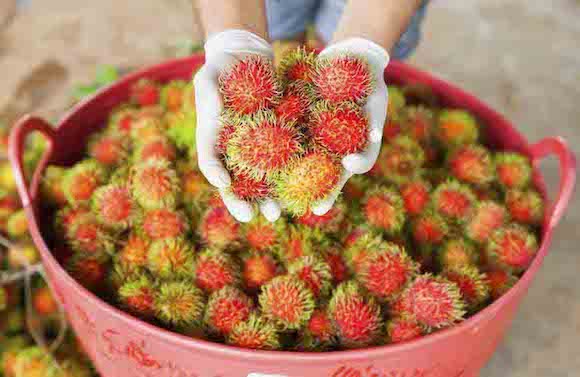
The soil of rambutan is deep, rich in organic matter, fertile and loose, with good drainage and aeration. The soil pH is between 4.5 and 6.5. Alluvial soil is the best. Alluvial soil refers to the soil developed on the river alluvium. Generally, the soil formation time is short, the development level is not obvious, and the soil fertility is high. Adult trees grow slowly and shoot new shoots 3-4 times a year. Rambutan blooms from February to April each year, and the fruit ripening season is from June to August. Rambutan grows in tropical regions.
Rambutan is native to the Malay Peninsula. Southeast Asian countries, such as Thailand, Sri Lanka, Malaysia, Indonesia, Singapore, and the Philippines have production, and the United States Hawaii and Australia also have cultivation. It is planted in Taiwan and Hainan of China, and wild rambutan is found in Xishuangbanna, Yunnan.
It blooms from February to April every year, and the fruit ripening season is from June to August. The 20-year-old tree can produce 100-125 kg of fruit. The husk is rich in pigments, which is a good dye. It can be dyed into yellow, army green, and coffee colors with different mordant dyeing methods.
Rambutan fruits are rich in nutrients and can be eaten fresh and processed into canned food. In addition, they can also be used to make candied fruit, jam, jelly and wine.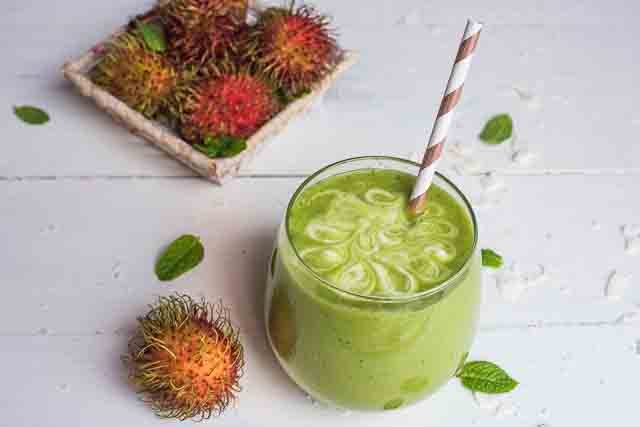
Rambutan flesh is yellow-white, translucent, juicy, crispy, sweet or sweet and sour, or has a fragrance. The excellent varieties of rambutan have large fruit, thin skin, small nucleus and thick flesh. The nucleus is separated, and the flesh is crisp, sweet and delicious.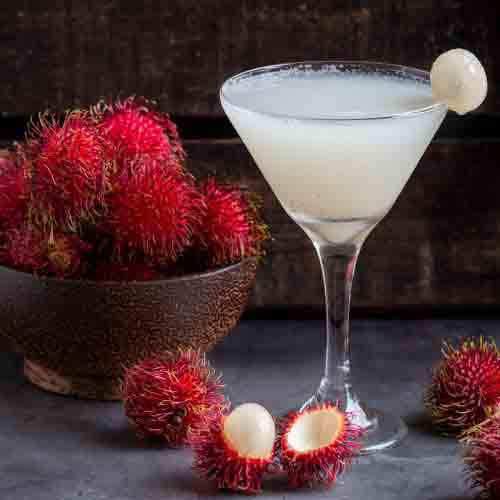
But the results are late, the yield difference is large, and the quality variation is large. At the same time, the rambutan seed tree is a dioecious fruit tree, and the proportion of male plants is 34.2%. Therefore, it is not conducive to the regionalization of improved fruit trees. Asexual reproduction methods are generally used in production, including grafting and air layering.
Rambutan PictureRambutan morphological characteristicsRambutan growth habit and growing environment and distributionRambutan efficacy and roleThe ornamental value of rambutanThe economic value of rambutanThe medicinal value of rambutanThe nutritional value of rambutanRambutan cultivationReproduction technologySelectionWash seedsMake sand bed
Rambutan Picture

Rambutan morphological characteristics
Rambutan is an evergreen tree with a height of more than 10 meters; the branchlets are cylindrical, wrinkled, grayish brown, and only the tender parts are rusty and puberulent. The petiole is 15-45 cm long, the leaf shaft is slightly stout, and wrinkled when dry; the leaflets are 2 or 3 pairs, rarely 1 or 4 pairs, thinly leathery, elliptical or obovate, 6-18 cm long and 4- 7.5 cm, blunt or slightly rounded at the top, sometimes nearly short-pointed, wedge-shaped at the base, whole, glabrous on both sides; 7-9 pairs of lateral veins, brownish-red when dry, only convex on the back, reticulate veinlets slightly honeycomb-shaped, Visible on both sides when dry. Its petiole is about 5 mm long.The inflorescence of rambutan is often branched, nearly as long as the leaves or longer, with rust-colored short hairs; pedicel short; the calyx is leathery, about 2 mm long, lobes ovate, tomentose; no petals; stamens about 3 Mm.
The fruit of rambutan is broadly oval, reddish-yellow, with thorns about 5 cm long, 4.5 cm wide, and thorns about 1 cm long. Flowering in early summer, fruiting in early autumn.

Rambutan growth habit and growing environment and distribution
Rambutan likes high temperature and humidity, no wind damage, low altitude mountain environment. The annual average temperature is above 24 degrees Celsius, and the temperature of the coldest month is higher than 17 degrees Celsius, which is suitable for the growth and development of rambutan. Rambutan is not drought-tolerant during the seedling stage and needs to increase water management appropriately. Water is most needed during fruit growth. Therefore, the annual rainfall of the cultivation land is required to be more than 1800 mm.The soil of rambutan is deep, rich in organic matter, fertile and loose, with good drainage and aeration. The soil pH is between 4.5 and 6.5. Alluvial soil is the best. Alluvial soil refers to the soil developed on the river alluvium. Generally, the soil formation time is short, the development level is not obvious, and the soil fertility is high. Adult trees grow slowly and shoot new shoots 3-4 times a year. Rambutan blooms from February to April each year, and the fruit ripening season is from June to August. Rambutan grows in tropical regions.
Rambutan is native to the Malay Peninsula. Southeast Asian countries, such as Thailand, Sri Lanka, Malaysia, Indonesia, Singapore, and the Philippines have production, and the United States Hawaii and Australia also have cultivation. It is planted in Taiwan and Hainan of China, and wild rambutan is found in Xishuangbanna, Yunnan.
Rambutan efficacy and role
The ornamental value of rambutan
Rambutan has beautiful appearance, and fruit trees can also be used as ornamental trees in gardens.The economic value of rambutan
Rambutan is a tropical fruit tree with great economic value. It enjoys a high reputation in the market and has a high price. It has certain adaptability for planting in Hainan, and the southern and southeastern regions are suitable for planting rambutan. It is a tropical fruit tree with high quality and good quality.It blooms from February to April every year, and the fruit ripening season is from June to August. The 20-year-old tree can produce 100-125 kg of fruit. The husk is rich in pigments, which is a good dye. It can be dyed into yellow, army green, and coffee colors with different mordant dyeing methods.
Rambutan fruits are rich in nutrients and can be eaten fresh and processed into canned food. In addition, they can also be used to make candied fruit, jam, jelly and wine.

The medicinal value of rambutan
Wash rambutan husks and decoct them as a tea, which can improve oral inflammation and diarrhea. The roots of the rambutan plant can be washed and boiled with water as a daily beverage, which can reduce fire and heat; its bark is boiled as a tea, which has a significant effect on tongue inflammation.The nutritional value of rambutan
Rich in vitamins, amino acids, carbohydrates and various minerals. Its nature and flavor are sweet and warm, the flesh is fragrant/sweet, thick and juicy, and some people call it the lychee of Lingnan in China, and it is even more aliased as Mao lychee.Rambutan flesh is yellow-white, translucent, juicy, crispy, sweet or sweet and sour, or has a fragrance. The excellent varieties of rambutan have large fruit, thin skin, small nucleus and thick flesh. The nucleus is separated, and the flesh is crisp, sweet and delicious.

Rambutan cultivation
Reproduction technology
Rambutan can be reproduced both vegetatively and vegetatively. Although seed reproduction is a means of selection.But the results are late, the yield difference is large, and the quality variation is large. At the same time, the rambutan seed tree is a dioecious fruit tree, and the proportion of male plants is 34.2%. Therefore, it is not conducive to the regionalization of improved fruit trees. Asexual reproduction methods are generally used in production, including grafting and air layering.
Selection
At this time, rambutan harvested the first batch of red ripe fruits, and the seeds left after eating the pulp were used for sowing. The first batch of fruit is of good quality, the most nutritious, and the seed quality is high. Seeds must be screened to remove those that are not full and spotted because they cannot germinate or have a low germination rate.Wash seeds
After selecting the seeds, wash the seeds, that is, manually scrub the sugar from the seeds in clean water. The pulp remaining on the seeds must be rubbed off because the remaining pulp and sugar can easily arouse the interest of horse ants or other underground pests and attract them to gnaw on seeds and sprouts. Subject to washing clean. Generally, change the water and scrub 2-3 times.Make sand bed
The sand bed is built on the ground in front of the house and behind the house, with a shaded place as well. Choose coarse river sand, because river sand is good for budding. The size of the sand bed depends on the number of germination seeds. The direction of the seedbed is determined according to the topography to facilitate drainage. A high groundwater level should be raised to avoid rotten seeds. A sand bed of 15-20 cm high is enough because the roots of the seeds are longer. 1.2 meters wide is enough, so it is easy to manage. Once the sand bed is leveled, seeds can be planted.Latest Updated
- Benefits of Bugleweed - 7 Science-backed Health Benefits
- Bugleweed Dangers & Side Effects - Is It Poisonous?
- How to Plant Evergreen Trees - What You Should Know
- When to Plant Evergreens - Grow Guide for Evergreen Trees
- 12 Wonderful Evergreen Shrubs for Your Garden
- 12 Popular Evergreen Plants with Pictures for Beginners
- When And How To Prune A Lilac Bush Like a Pro
- How to Grow & Care for Lilac Vine (Hardenbergia Violacea)
- Japanese Lilac Tree (Syringa Reticulata) Care & Propagation Guide
- Shumard Oak Pros and Cons - What to Know
Popular Articles
- Winter maintenance of Antirrhinum Majus
- How to Grow Terminalia Mantaly Tree
- How to Grow and Care for Crossostephium Chinense
- How to grow Antirrhinum Majus in spring
- Peristeria Elata (Dove Orchid) Profile: Info & Care Guide
- Underwatered Snake Plant (Sansevieria Trifasciata) - Signs And How To Fix
- How to Care for Brazilian Jasmine Plant (Mandevilla Sanderi)
- How to Grow & Care for Graptopetalum Purple Delight in Summer
- Rosa Chinensis (China Rose): Plant Growing & Care Tips
- How to Care for Baby Sun Rose (Aptenia Cordifolia)